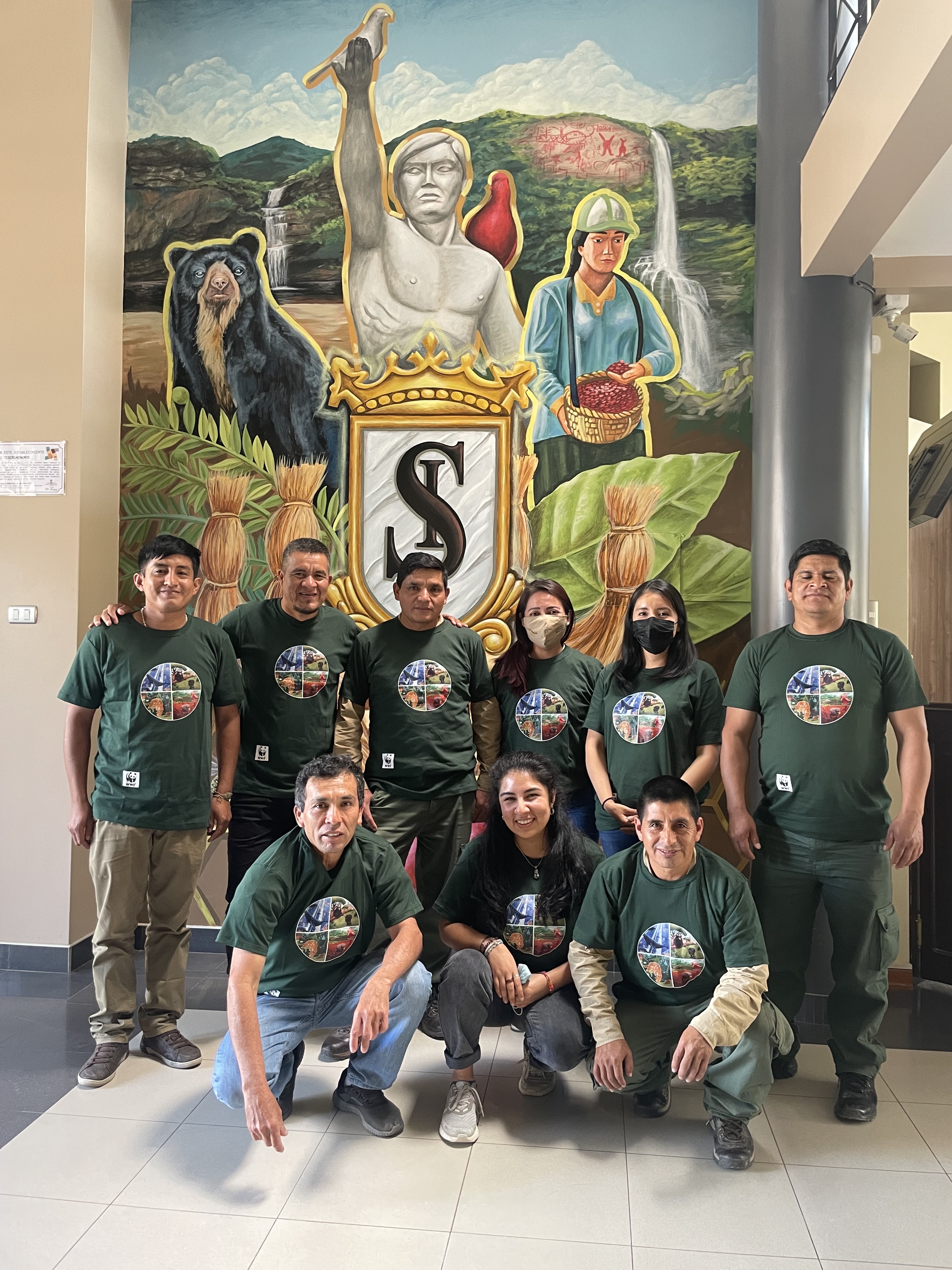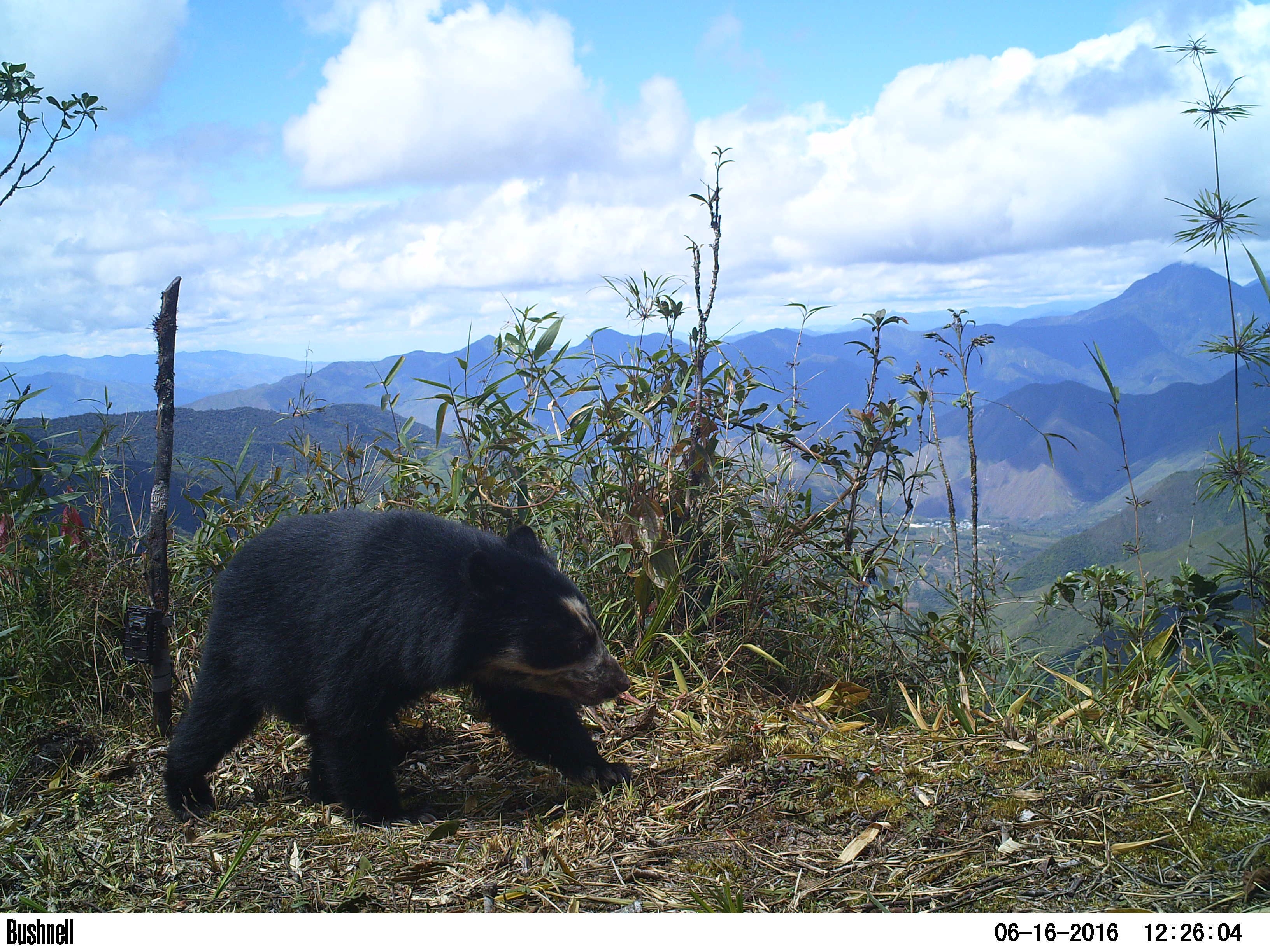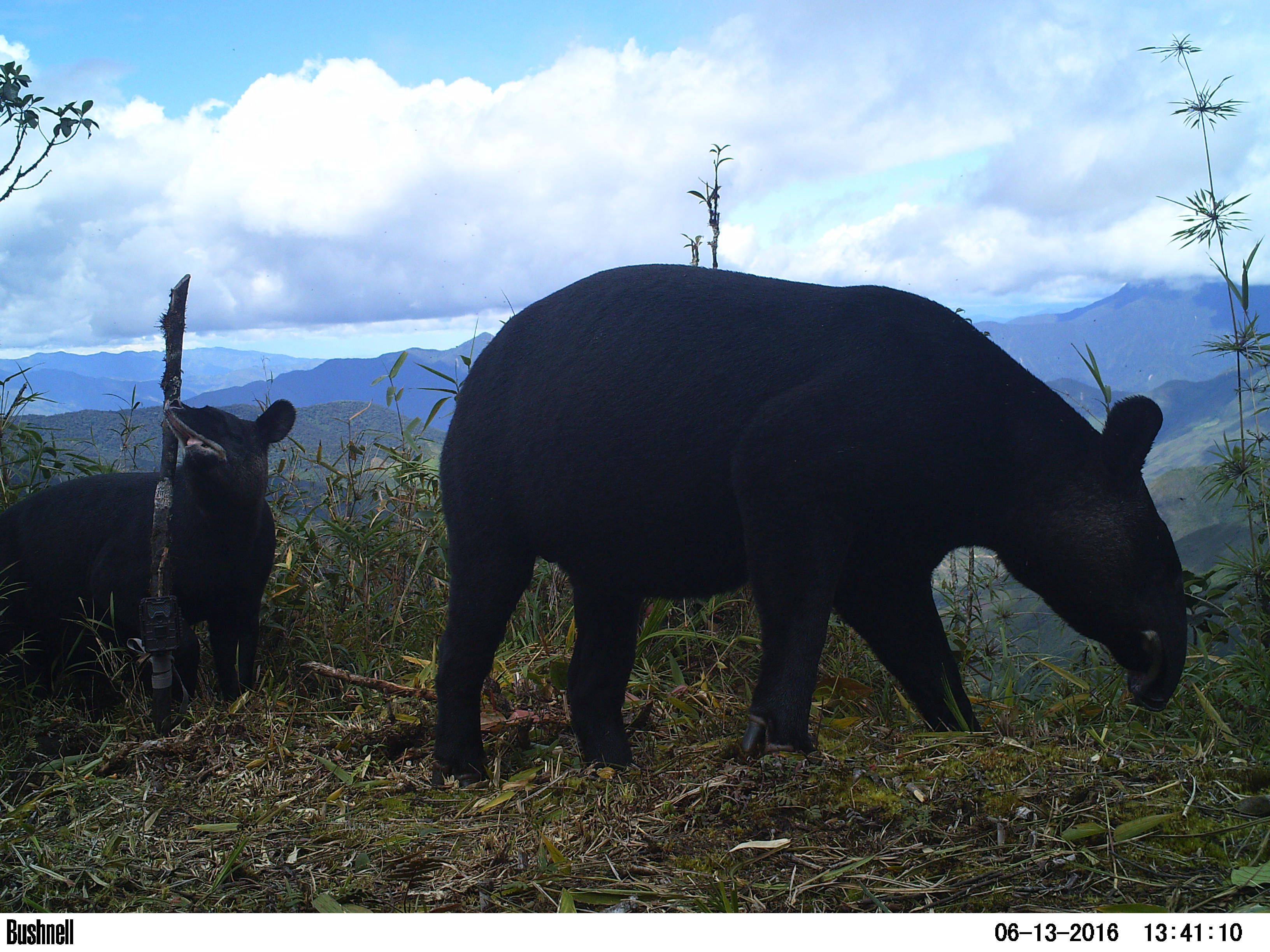Bear and Tapir monitoring in the Tabaconas-Namballe National Sanctuary, Peru
Background
The National Sanctuary of Tabaconas-Namballe is located in the province of San Ignacio, Cajamarca, Peru. It spans over 32,125 hectares and is home to many emblematic species such as the Andean bear and the Mountain tapir. However, the area faces numerous threats including agricultural expansion from coffee production and cattle ranching, as well as poaching, uncontrolled burning, and illegal mining. Conserving the montane forest and paramo ecosystems is key to regulate climate, provide critical ecosystem services and maintain biodiversity.
To ensure the permanence of the Andean bear, Mountain tapir and other species, WWF Peru and the Tabaconas Sanctuary have been working together since 2014 to protect and restore the local ecosystem. In 2021, WWF received additional support from the Amazon Sustainable Landscapes Program (ASL), funded by the Global Environment Facility (GEF), and led by the World Bank. The ASL project provided support to efforts in Colombia, Brazil and Peru to strengthen the capacity of governments and communities to monitor biodiversity using camera trap data.
With this support, WWF worked with Tabaconas Sanctuary staff to identify the key questions related to managing biodiversity in the region. The Sanctuary staff wanted to know:
- How do priority species populations change in responses to seasonal variations?
- Which conservation strategies are most successful in increasing the populations of priority species?
- Are priority species being displaced as a result of cattle ranching?
- Are there other external factors impacting wildlife conservation that have not yet been identified or addressed in the Tabaconas Sanctuary management plan?

What challenges did you face with managing, processing, or sharing camera trap data before you began using Wildlife Insights?
Camera traps are easy to configure and can detect a wide range of species, but the data require significant time and effort to process and analyze. In the past, limited resources for data processing and analysis have raised concerns around the sustainability of the Andean bear and Mountain tapir monitoring program. The team hopes this will no longer be a limitation with Wildlife Insights.
As part of the ASL project, WWF Peru, the Tabaconas Sanctuary and The National Service of Natural Areas Protected by the State (SERNANP) held two workshops to build local capacity to use Wildlife Insights for processing and analyzing camera trap data in the Tabaconas-Namballe National Sanctuary.The team is also working to strengthen relationships with local communities and facilitate community-led monitoring efforts.
“Through this joint initiative with SERNANP, as part of a multi-year commitment to monitoring the Andean bear and mountain tapir, we seek to promote the use of practical tools and emerging technologies. The aim is to continuously build capacity of local area managers to collect and utilize their own biodiversity information” commented Fabiola La Rosa, WWF-Peru Wildlife Officer.

How has Wildlife Insights helped you achieve your goals?
Not only does Wildlife Insights help the Tabaconas Sanctuary staff to organize data, saving valuable time in processing images, but it also provides important biodiversity indicators, such as species richness, and allows for quick comparisons between different sites.
“Using artificial intelligence, Wildlife Insights facilitates the task of identifying species, by tagging thousands of images in a matter of minutes. In addition, it promotes collaboration and allows other users to participate in the identification of images and explore others from all over the world” mentioned Juriko Rupay, WWF-Peru Wildlife Assistant.
Wildlife Insights also generated temporal analyzes for the dry and rainy season, helping to address the team’s initial question on the seasonality of key species.
Moving forward, the team will be collecting information on other variables, such as intervention strategies (including effectiveness of patrolling), the impact of livestock and agricultural activities, and changes in climate. The team also plans to use Wildlife Insights to evaluate the impact of different management scenarios to improve the planning and development of Tabaconas Sanctuary conservation strategies.
“Image processing with statistical programs requires complex analysis. However, through this ASL project, the aim was to optimize biodiversity data management in the Sanctuary. This will contribute in a simple, practical way to decision making”, concluded Carolina Guevara Molina, the Sanctuary’s Head.
Share your story with the Wildlife Insights community!

